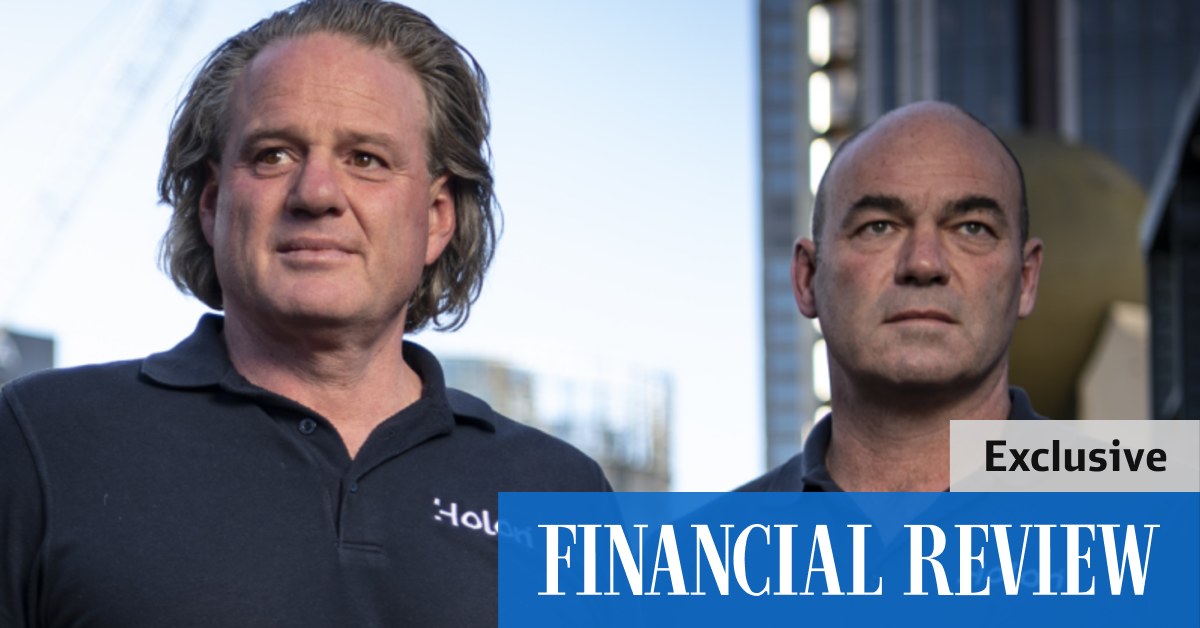Holon may close retail crypto funds after surprise ASIC whack

If ASIC had the intention of really sewing some fear and putting the industry on notice that its position was very hardline, its likely worked. Anyone wanting to work with the regulator on how their digital asset business can be compliant is going to think twice about it now.
The first real test
Many saw the Holon funds as the first real test of how digital assets can fit under the existing financial regulations, with Holon receiving an Australian Financial Services License in May, before launching the three funds in June.
Holon, whose investment manager Heath Behncke will speak at The Australian Financial Reviews Super & Wealth Summit on Tuesday, had hoped a Managed Investment Scheme would not only attract insurance coverage that would protect investors, but it also would give financial advisers a way to offer exposure to digital assets.
But its this access that ASIC largely took issue with. It outlined in its stop orders that Holon had not properly defined the risks of the funds and that those risks didnt match the target market Holon had suggested.
The two parties met for a hearing, where Holon argued it had disclosed the risk that assets in the funds could face a total loss of value. It also added determinations of medium, high and very high risk profiles could comfortably apply within a 5 per cent portfolio allocation.
ASIC focused on volatility
But ASIC has made clear volatility in crypto assets remains its primary concern.
In its letter to Holon, the regulator described digital assets as highly volatile and complex and making concentrated investments in individual crypto-assets very risky and speculative.
Investors are likely to experience significant price volatility and deep negative returns in periods of asset price decline, the regulator said.
ASIC pointed out that the extreme volatility of Bitcoin prices over the past eight years meant there were four times when annual returns were negative. Price drops were sometimes so severe value was eroded by as much as 75 per cent between December 2017 and December 2018.
ASIC said these wild swings were incompatible with an investor who has a medium risk profile, nor a high risk profile.
According to ASICs definitions, a medium risk investor can bear up to four negative returns over a 20-year period, and a high risk investor can bear up to six negative returns over a 20-year period.
ASIC did not provide comment over the weekend.
In its application to ASIC, Holon used the templates the Financial Services Council sets out for those wanting to launch investment funds. The templates suggested a satellite allocation should be around 25 per cent of a portfolio or less.
Acknowledging the risk inherent within digital assets, Holon amended its definition of satellite to be less than 5 per cent or less.
Weve never suggested someone invest 100 per cent of everything they own in one of these funds, Mr Behncke said.
The innovation here was to have an insured, regulated product that gave financial advisers a way to embed digital assets in a broader portfolio strategy.
Holon conceded there was an error in its filings to ASIC that suggested these funds would be appropriate for retail investors wanting to allocate between 75 per cent and 100 per cent of their investible assets, and has amended this point.
Compliance unclear for industry
But whether Holon has done enough to observe ASICs requirements is still unclear, and given ASICs new product intervention powers can be used regardless of whether theres been a breach of the law has interrupted Holons chances of getting insurance for its funds.
Liam Hennessy, a lawyer at Gadens in Brisbane, said ASICs determination that all crypto-related businesses are dealing in something akin to kryptonite is unsettling.
This is a very clever, targeted use of regulation, Mr Hennessy said. Its designed for maximum impact and to send a message to the market that anything to do with crypto is very dangerous.
Despite its tough approach to regulating digital asset businesses, ASIC has published findings that show 44 per cent of Australians had exposure to digital assets, generally through unregulated exchanges.
Holons troubles with ASIC are not unique to crypto businesses trying to operate within the existing financial regulation, and in the legislative vacuum regarding digital assets.
What we do know now is that insurers wont touch us because of these stop orders, Mr Behkcke said.
The industry has been looking for direction from the regulator and for the last few years it was quite encouraging, but these orders will keep many other businesses on the sidelines now.








 Bitcoin
Bitcoin  Ethereum
Ethereum  Tether
Tether  Solana
Solana  USDC
USDC  Lido Staked Ether
Lido Staked Ether  XRP
XRP  Dogecoin
Dogecoin  Toncoin
Toncoin